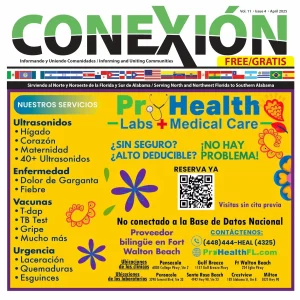Citizen participation in the US oil drilling plan is vital.
The true cost of offshore drilling.
Por Johani Carolina Ponce | Huella Zero | https://huella-zero.org/
The administration of President Joe Biden announced his plan to drill for oil and gas off the coast of the United States. By law, the Department of the Interior must issue a plan for new oil and gas concessions in federal waters every five years. This new plan establishes where the government can sell oil and gas leases. The approval of the project depends on the participation of the public, who will have until the beginning of October to present their comments.
“Today, we present an opportunity for the American people to consider and provide input on the future of offshore oil and gas leasing,” said Interior Secretary Deb Haaland.
The proposed schedule includes an alternative that would not schedule new lease sales for offshore drilling. This comment period is the last opportunity for the public to provide input before the advertised schedule is finalized. You can access and follow the instructions at this link: https://www.regulations.gov/document/BOEM-2022-0031-0001
Minorities and oil production
Researchers in many states have found that oil and gas workers, and the estimated seventeen million Americans who live within a half-mile of production sites, are more likely to suffer from health problems such as asthma and cancer. Many of these sites are located near indigenous or minority communities. According to the study Proximity to Oil Refineries and Risk of Cancer: A Population-Based Analysis, proximity to an oil refinery was associated with an increased risk of multiple types of cancer, and hundreds of thousands of gallons of oil are spilled each year. oil in U.S. waterways and oceans. Spills occur in a variety of ways, including collisions, as was the case with the Exxon Valdez tanker in 1989, and explosions, as with the BP Deepwater Horizon drilling rig in 2010.
Rubén Capote is a meteorologist for Telemundo 49 and previously worked for oil complexes in the Gulf of Mexico as a natural risk analyst. For example, one of the basic operations of these platforms concerns the separation of liquid and gas with the extraction of oil from underwater deposits. The process residue is incinerated through a lighter or burner. “That is basically the combustion of hydrocarbons. And there is a contaminant that you are going to have every day because necessarily the oil industry, when you have a process for separating crude oil into gas, you are going to have that residue, you are going to have that burner on there that sometimes even it cannot burn all the gas and comes with little liquid that is poured over the burner and falls either to the land or to the sea. So, the impacts… can be catastrophic when that’s done on a large scale,” Capote warns.
It’s hard to find someone who shares the experience of working for oil rigs. Capote is one of the few to offer his expertise in areas from raising awareness in his community to being actively involved in conserving the environment.



